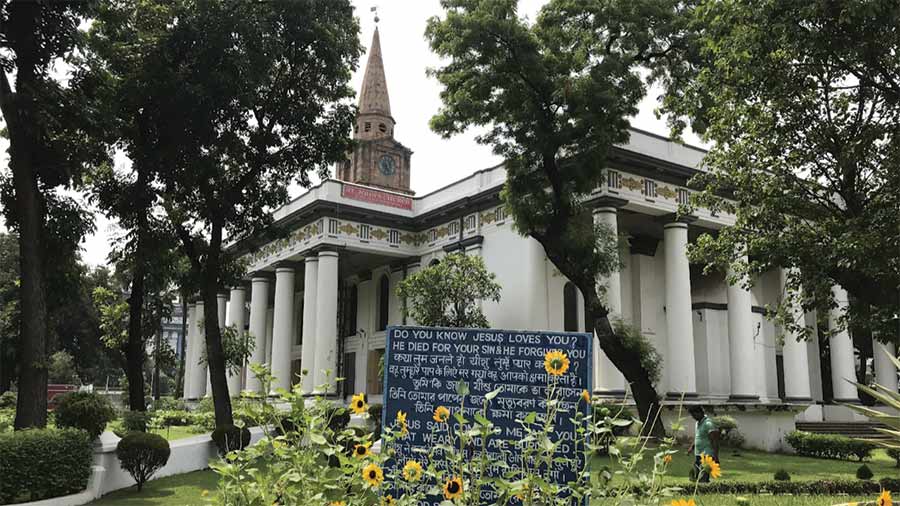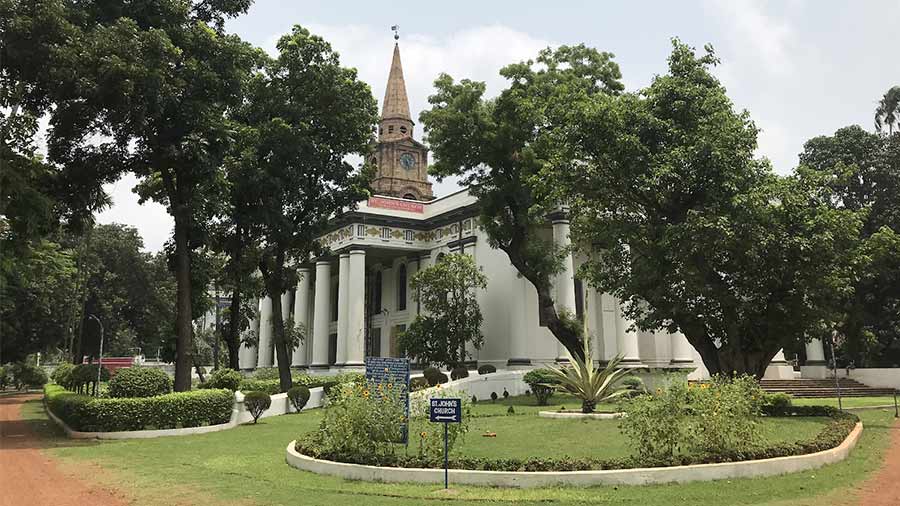The Portuguese legacy of Bengal is still palpable in the heart of Kolkata, but sadly, it is overlooked and not paid the respect it deserves.
The huge, yellow clock-towered Latin Catholic church on Lenin Sarani was once a landmark of old Calcutta’s central business districts and its history is extraordinary on many counts.
Astonishing as it may sound, an attempt to murder, or at least a street fracas between two Europeans in colonial Calcutta, indirectly gifted this city a huge edifice — the Portuguese church of Dharmatala (Esplanade), officially called the Church of the Sacred Heart of the Jesus, and commonly known as Sacred Heart Church.
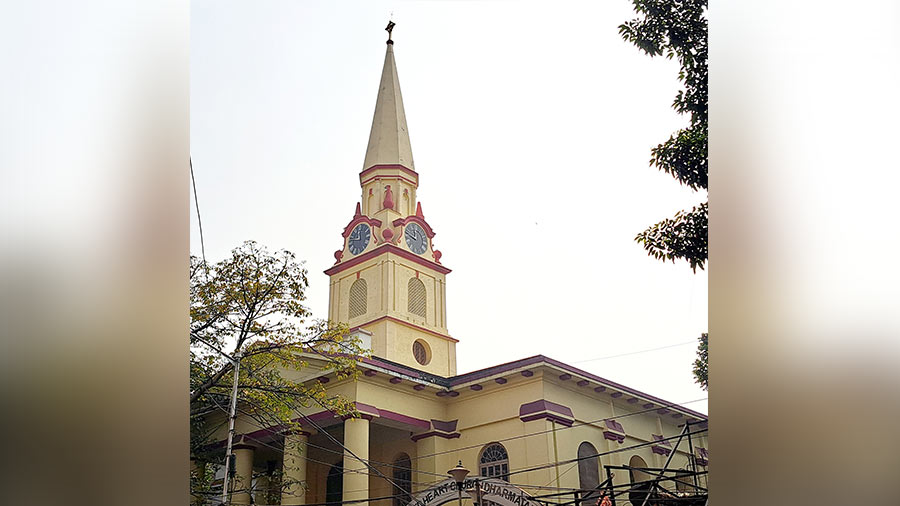
An external view of the church
In Calcutta, 1821, near Old Chowringhee Theatre, a man named Luis De Souza openly fired inside a horse carriage, seriously injuring one Joseph Gonsalves. De Souza was arrested and an attempt to murder case was filed against him in the Supreme Court of Bengal.
Hearing this, his mother Pascoa Barretto De Souza, who was daughter of Luis and Deodita Barretto and widow of Thomas De Souza, began praying for his life and made a resolution to build a church if her prayers were answered. Her son escaped capital punishment, but was imprisoned for a decade.
After De Souza was released, to keep her commitment, she laid the first stone of the church on February 12, 1832. Meanwhile, the Catholic Emancipation Act was passed in 1829 in the UK. The church was completed in two years and its consecration was held on Easter Sunday, March 30, 1834.
The church still has the dedicatory slab of that event on one of its walls.
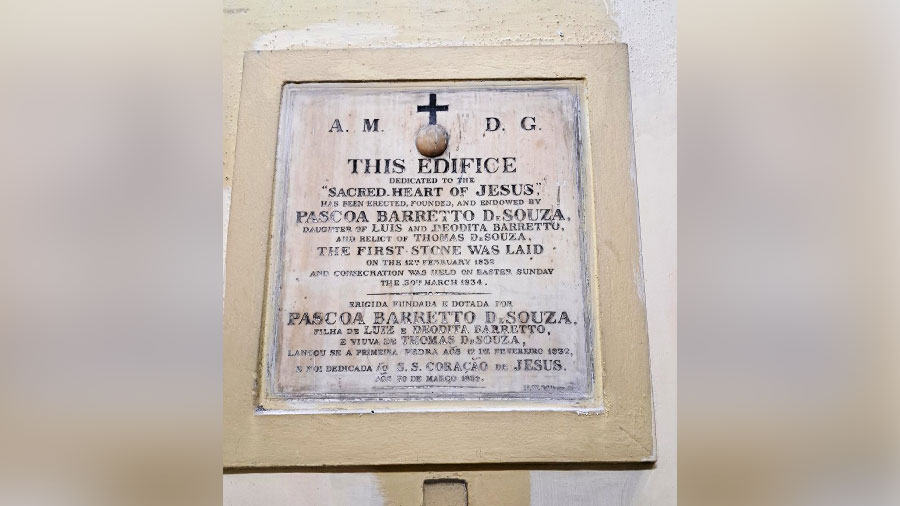
The dedicatory slab noting the church’s foundation
The function was presided by Rev Frei Cimao, the Consicao of the Portuguese church of Baithakkhana Road. The total cost of building the church was near Rs 2,00,000, and according to historian Radharaman Roy, a kind lady named Mrs Sheriff contributed a large sum to build the edifice.
Built in typical German Gothic style with a sharp spire as its central tower, the church is extended in the rear with an array of windows. On its front, there is a pediment in Greek temple style, which is supported by four Doric pillars. On the front side of the pediment, the year 1843 is inscribed. The bottom of the spire meets on an octagonal base and three sides of its bottom are decorated with a clock dial. The 160-year-old clock was operational till a few years back, but is now not functioning as the church authority found its maintenance too expensive.
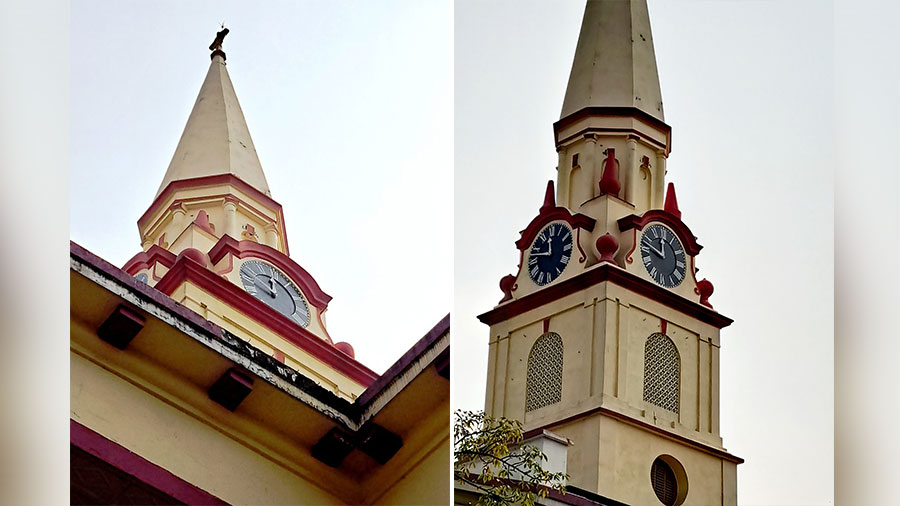
The church’s spire and clock tower
The church has a chapel inside, which was recently renovated haphazardly, destroying much of its heritage aesthetics.
Its old stone flooring has been replaced by cheap contemporary tiles. Even the walls are covered with tiles that simply do not go with the heritage appeal of this church.
However, some salvaged heritage in the chapel remains — including two old marble lecterns, a holy communion table, pulpits and a small square marble block that contains relics of a saint sent from Rome at the time of its foundation.
The main prayer hall, which is now elevated, has a more classical look. The best of which are the magnificent stained-glass windows with figures of Jesus, Mary and many apostles of Christ. Most of the stained glasses are imported from Germany.
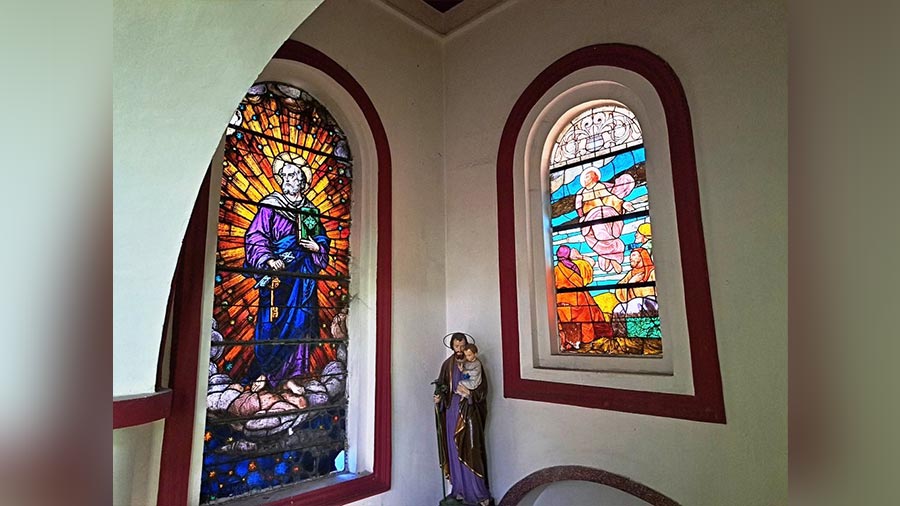
The stained glass windows
The nave looks beautiful with an array of old Corinthian pillars. The passage with rows full of pews ends at the altar of the church, which houses a statue of Jesus with two excellent stained glass windows installed on either side.
However, the main attraction of this church is largely unknown to most Kolkatans. This is the only church in West Bengal that houses 14 marble stations of the Cross on its walls depicting the last journey of Jesus to his crucifixion.
This is exceptional because all other churches of Bengal have such Cross stations made of wood, clay, plaster or other material. But here, all 14 panels, which were imported from Europe, are made of marble. The carving is outstanding and expresses the pain and sorrow of the journey, making them a hidden treasure of the church.
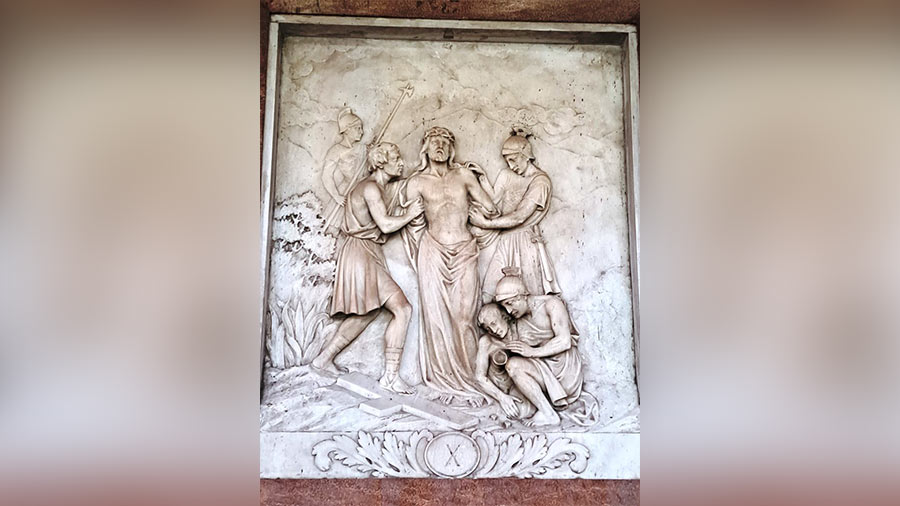
One of the marble carvings
The church has a small grotto on its rear, which houses a small statue of Mother Mary. The church runs a free clinic that serves the poor people of the vicinity.
Until 1995, the front of the church was surrounded by a marvelous iron railing imported from Europe. However, the nonstop encroachment of the pavement before it forced the church authorities to make a concrete wall. Thus, that iron railing is no longer visible.
Father Hansel De Souza, the present head of the church, said that though this church is one of the oldest edifices of Portuguese heritage of Bengal, it has sadly never been able to attract proper attention from history enthusiasts or the government.

